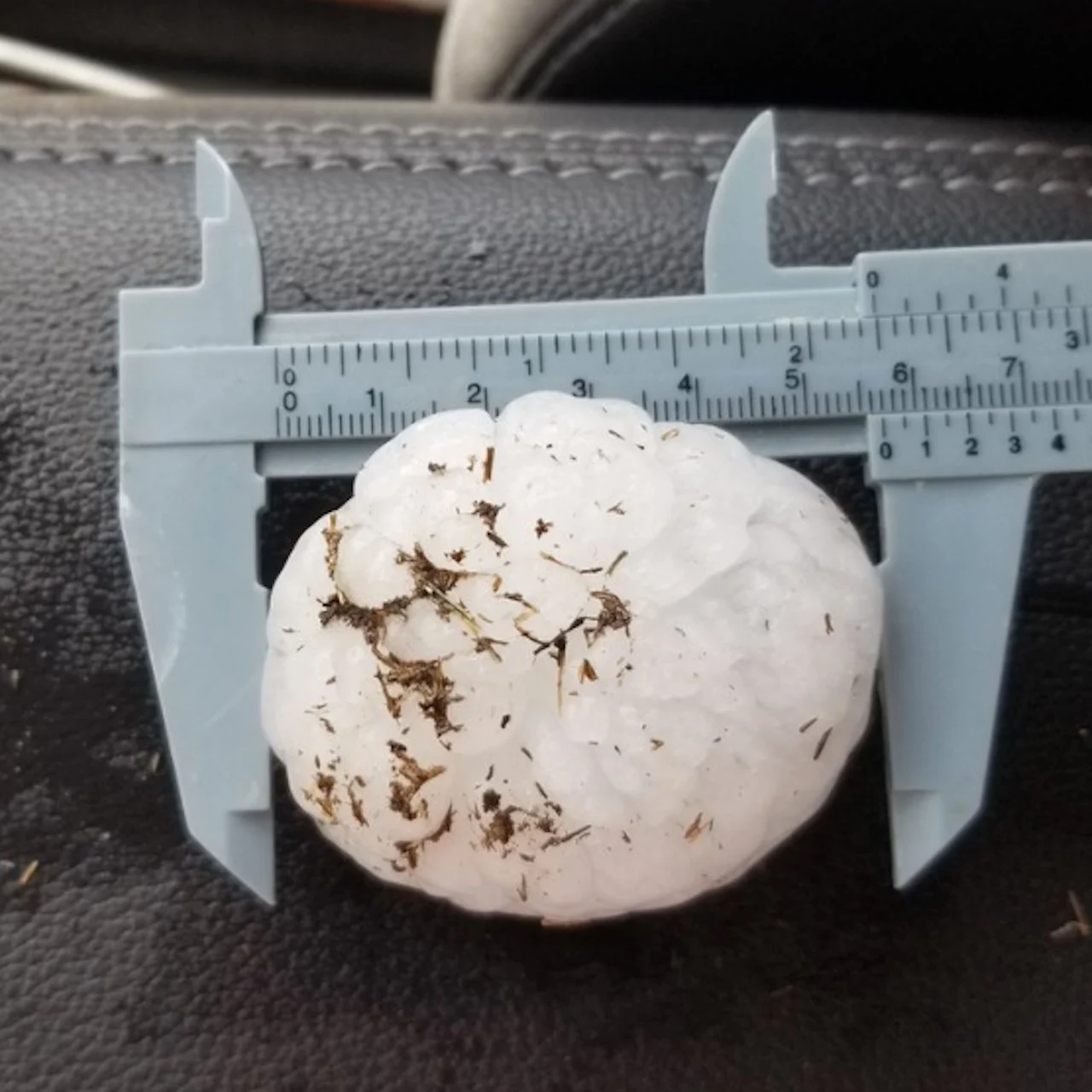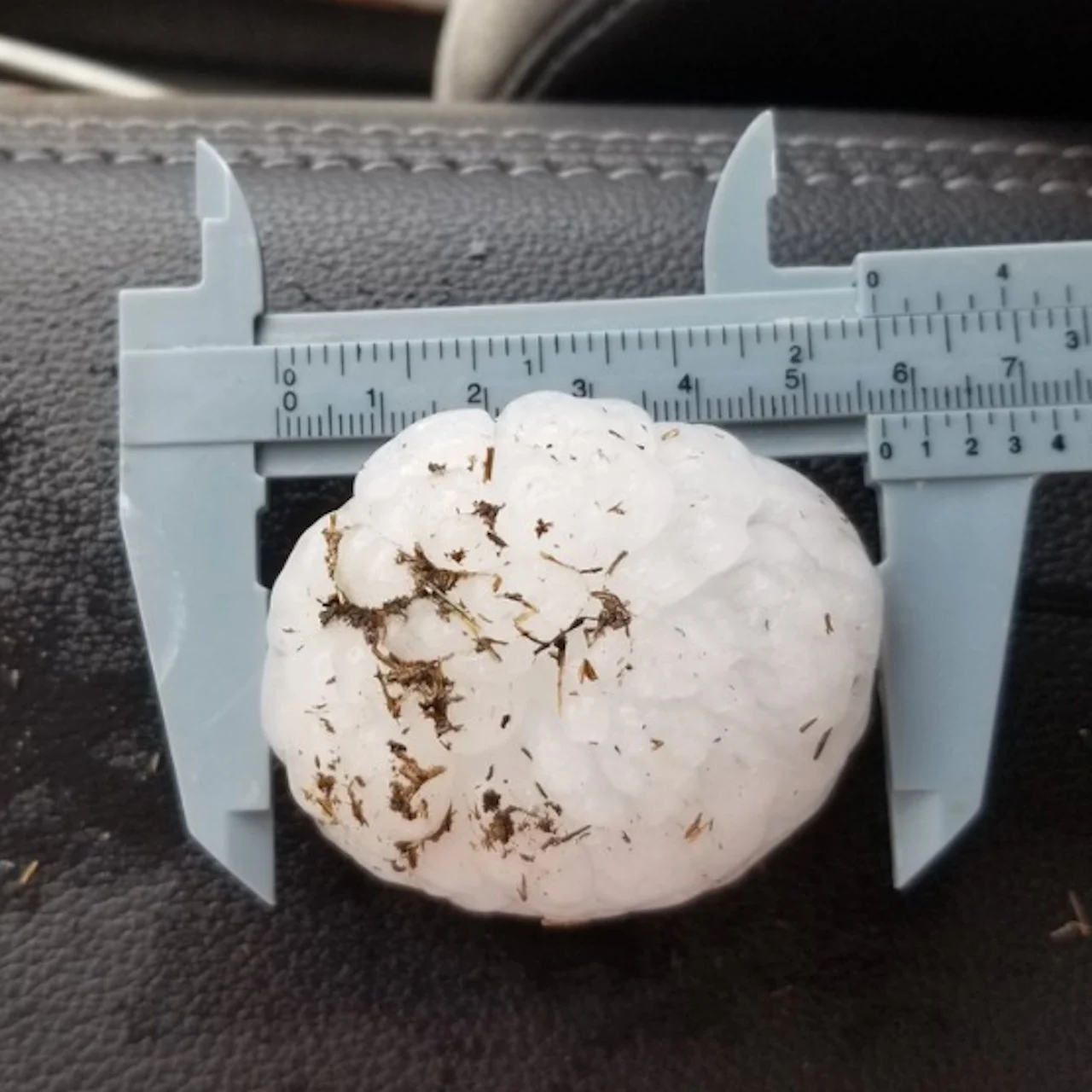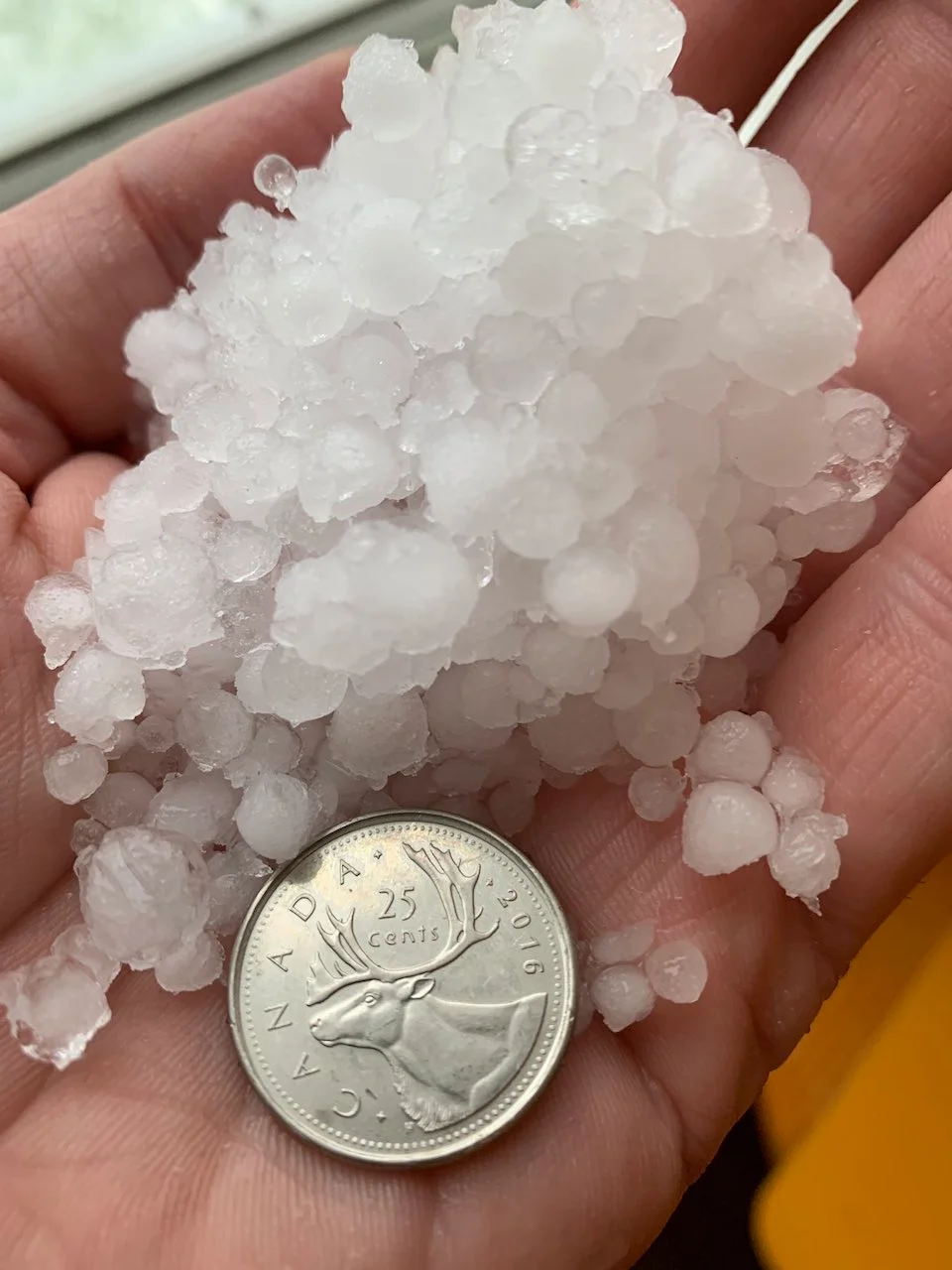
Success of Northern Tornadoes Project spins off new hail counterpart
The Northern Hail Project (NHP), formally announced Tuesday morning, will be documenting the frozen phenomenon in Canada to get a 'full picture' of the risk associated with it.
Canada's vulnerability to damaging hail is why it is critical to document its frequency and how impactful it can be.
With the success of Western University and ImpactWX's Northern Tornadoes Project (NTP), which launched in 2017, it seems like a natural progression for the groups to expand their investigation of Canada's severe weather to include hail.
SEE ALSO: $1.2B Calgary hailstorm ranks as Canada's 4th costliest natural disaster
That's why the groups formally announced the creation of the Northern Hail Project (NHP) Tuesday morning, an initiative that will be in the field for the upcoming storm season to document the frozen phenomenon.
According to NTP partner Catastrophe Indices and Quantification Inc. (CatIQ), Canada has been hit with more than $2 billion in insured losses due to hail-laden thunderstorms since 2020, mainly in Alberta.
“Damage and losses due to severe storms in Canada are growing, and hail damage is a significant contributor. Like with tornadoes, we feel it is important to have a full picture of the risk associated with this phenomenon,” Gregory Kopp, ImpactWX chair in severe storms engineering and NTP/NHP research lead, told The Weather Network via email.

(Kyle Brittain/The Weather Network)
"To do this, we need to track down all of the significant events, even when they don’t hit a city or town, like [what] we do with tornadoes."
WORK TO COLLECT DATA HAS BEGUN
Partnering with the Institute for Catastrophic Loss Reduction (ICLR), NHP researchers will mainly target Alberta for its research during a five-year period (2022-26). ICLR, a Western-based centre for multidisciplinary disaster prevention research and communication, has already initiated the process to collect data from the province’s damaging hail events.
In the coming months, Western University's engineering department will put together a field research team to assess and register damage from hailstorms, incorporating its experience of analyzing tornado damage.
Ultimately, the aim of the new project is to help ensure the safety of Canadians and to reduce damage to property, said David Sills, NTP executive director, in an email to The Weather Network.

Ponoka, Alta., hail. (Jeffrey Heyden-Kaye/Submitted)
"By studying the details of the damage, one can learn about how to mitigate that damage. Also, by tracking down all significant events, we provide ground-truth data for the forecasters who issue warnings, enabling them to improve forecasts and alerts," said Sills. "In the process, we are also building an observational data set that can be used for climate change research."
While there currently isn't a hail damage rating system used in Canada, similar to the Enhanced Fujita (EF) scale for tornadoes, it is something researchers will consider as they gather data, Kopp stated.
"In the meantime, measurable hailstone characteristics such as maximum diameter, mass and hardness are often used to assess damage potential," said Kopp.
When ready, submitting hail reports to NHP will be similar to how NTP accepts them. For example, to file a report via Twitter, people will be able to tag @NHP_Reports.
As well, Western will be collaborating with Environment and Climate Change Canada (ECCC). Data will be shared with ICLR, ECCC and the public. It will also be archived and used to review the meteorological conditions associated with hail-producing storms.
WATCH BELOW: NORTHERN TORNADOES PROJECT SEEKS EVERY TWISTER IN CANADA
Follow Nathan Howes on Twitter.










